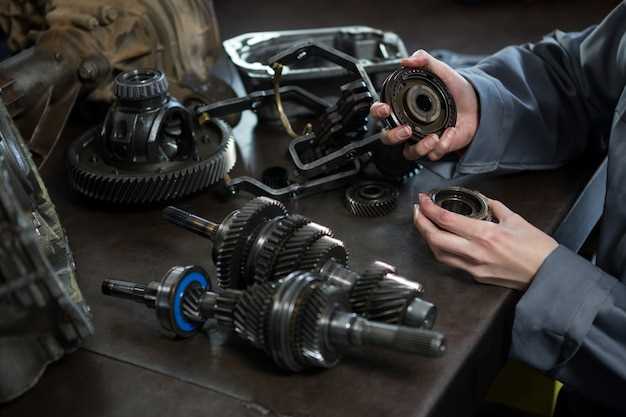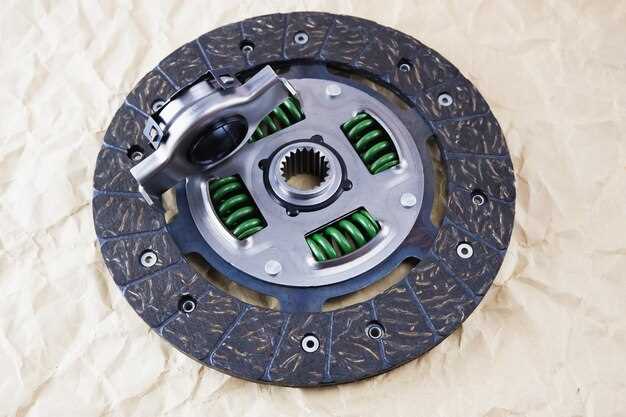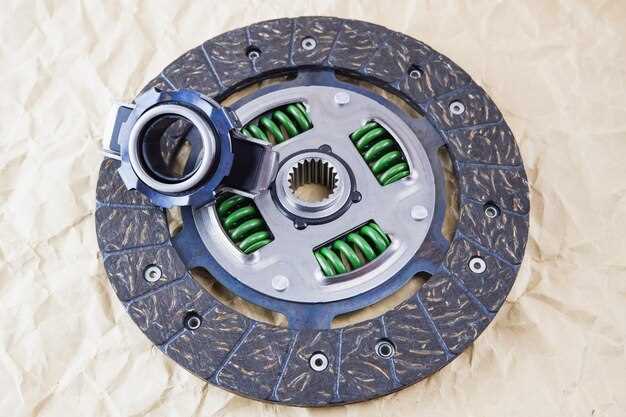

In the world of motorsports, where every second counts, the performance of your vehicle can make or break your race. One of the critical components that significantly influences acceleration and overall speed is the clutch system. For high-performance track cars, a reliable and efficient clutch kit is essential to handle the increased torque and power generated by modified engines.
As drivers push their vehicles to the limits, the demands on the clutch intensify. Choosing the right clutch kit is not merely about enhancing acceleration; it’s about ensuring that the power is efficiently transmitted from the engine to the wheels under extreme racing conditions. In this article, we’ll explore the top clutch kits available for enthusiasts aiming to elevate their track performance and gain a competitive edge.
Whether you are racing on tight circuits or open tracks, the right clutch setup can significantly improve your lap times. From lightweight flywheels to high-friction materials, understanding the features of each kit can help you make an informed choice that matches your racing style and vehicle setup. Let’s delve into the best options for those seeking top-tier performance on the track.
Choosing the Right Race Clutch for Your Vehicle’s Specs

When selecting a race clutch for your high-performance track car, it is essential to consider your vehicle’s specifications and the specific demands of racing. The choice of clutch plays a vital role in maximizing torque transfer from the engine to the drivetrain, which directly impacts acceleration and overall performance.
The first step in choosing a race clutch is to assess your engine’s torque output. Different clutches are rated for specific torque limits, so understanding your engine’s capabilities is crucial. A clutch that is too weak will slip under high torque conditions, leading to inefficient power transfer and potential engine damage.
Next, consider the type of racing environment you will encounter. For instance, drag racing may require a different kind of clutch than road course racing. Drag racing often benefits from clutches that engage quickly and can handle sudden bursts of torque, while road racing may prioritize durability and smooth engagement throughout extended periods of high performance.
Material composition also significantly influences clutch performance. Options like organic compounds, ceramic, and metallic materials each offer distinct advantages and drawbacks in terms of weight, heat resistance, and engagement feel. A ceramic clutch, for example, may handle higher temperatures and torque better in extreme conditions but can be harsher on the drivetrain during everyday driving.
Additionally, consider the clutch’s diameter and design. Larger diameter clutches typically provide better grip and torque handling capabilities but may add weight. A balanced approach to diameter and material can aid in achieving optimal performance without compromising the vehicle’s dynamics.
Finally, don’t overlook the importance of proper installation and tuning. A well-installed clutch combined with the correct adjustments can significantly enhance your vehicle’s track performance. Engagement points, pedal feel, and overall drivability should be tested and tweaked to match the racer’s style and race strategy.
In summary, choosing the right race clutch involves a careful evaluation of your vehicle’s torque specifications, racing type, material preferences, and installation practices. By focusing on these key aspects, you can ensure a clutch choice that maximizes your high-performance track car’s potential.
Maximizing Torque Transfer: Key Features of High-Performance Clutches
In the realm of high-performance track racing, achieving optimal torque transfer is crucial for maximizing vehicle dynamics and performance. High-performance clutches are specifically designed to enhance this transfer, ensuring that power is efficiently delivered from the engine to the wheels. Several key features play a pivotal role in the effectiveness of these clutches.
One significant aspect is the material composition. High-performance clutches often utilize advanced materials such as carbon, ceramic, or specialized alloys. These materials provide superior heat resistance and friction characteristics, which are essential for maintaining performance during extreme racing conditions. They allow for higher grip levels and minimize slippage, ensuring that maximum torque is transferred during acceleration.
Another critical feature is the disc design. Multi-disc setups are common in high-performance clutches, as they increase the surface area for friction. This design not only enhances torque transfer but also spreads the load across multiple surfaces, reducing wear and extending the lifespan of the clutch. The ability to handle higher torque loads is vital for vehicles that endure rigorous racing environments.
Furthermore, the clutch actuation mechanism influences performance. Many high-performance clutches employ a hydraulic actuation system, which provides precise engagement and disengagement. This precision is essential for maintaining traction during gear shifts, allowing drivers to make quicker transitions without losing power to the wheels. The responsiveness of the actuation system directly correlates with a driver’s ability to manage torque effectively.
Additionally, adjustability is a notable feature in many top-tier clutches. Being able to fine-tune the clutch’s engagement point can help drivers adapt to specific track conditions, enhancing their ability to transfer torque efficiently. This customization empowers drivers to maximize their performance based on varying track surfaces and weather conditions.
In conclusion, maximizing torque transfer in high-performance clutches requires a combination of advanced materials, innovative designs, precise actuation mechanisms, and the ability to adjust settings. These features collectively enhance the racing experience, allowing drivers to extract the full potential of their vehicles on the track.
Installation Tips for Optimal Performance in Track Conditions

When installing a clutch kit for high-performance track cars, it’s crucial to ensure optimal torque transfer during racing conditions. Begin by thoroughly cleaning all mounting surfaces to prevent any debris from interfering with the clutch’s engagement. Inspect the flywheel for any imperfections and resurface it if necessary; a smooth surface aids in consistent torque transfer.
During installation, use a torque wrench to apply the manufacturer’s specified torque settings on all fasteners. This ensures that the pressure plate is evenly tightened, providing an optimal grip. Pay attention to the alignment of the clutch disc; misalignment can lead to uneven wear and compromised performance, especially during dynamic race conditions.
It’s also essential to break in the new clutch properly. Engage in a few gentle cycles of acceleration and deceleration to allow the materials to settle and work together. Avoid significant heat buildup during this phase, as excessive heat can adversely affect performance and longevity. Consider monitoring clutch temperatures during initial testing sessions to prevent premature failure.
Finally, ensure that your vehicle’s pedal assembly is in good condition to facilitate precise control. A well-functioning hydraulic system can significantly enhance the transfer of power to the ground. Regular maintenance and timely checks will help achieve consistent race performance, giving drivers the confidence needed to excel on the track.







